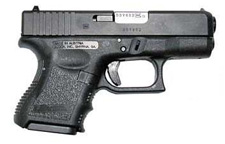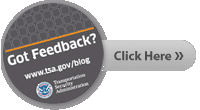The Truth Behind the Title: Behavior Detection Officer
Ever get the feeling you’re being watched? Usually it’s just nerves or a good dose of electromagnetic energy, but if you’re traveling through a TSA checkpoint, chances are there are several sets of eyes on you. What are they looking at? Is your hair messed up? Looking flustered after problems at the ticket counter? Have toilet paper stuck to the bottom of your shoe? No. You’re being watched by Behavior Detection Officers, or BDOs in government acronym-speak.
The program was designed by Paul Ekman (PhD), a psychology professor at the University of California Medical School, San Francisco. He’s been studying behavioral analysis for the past 40 years and has taught the TSA, Customs and Border Protection, CIA, FBI and other federal agencies to watch for suspicious facial expressions of tension, fear or deception. He has even taught animators at Disney-Pixar to create convincing faces for film characters. After passing along his skills to US Customs, their “hit rate” for finding drugs during passenger searches rose to 22.5 percent from 4.2 percent in 1998.
Behavior analysis is based on the fear of being discovered. People who are trying to get away with something display signs of stress through involuntary physical and physiological behaviors. Whether someone’s trying to sneak through that excellent stone ground mustard they bought on vacation, a knife, or a bomb, behavior detection officers like me are trained to spot certain suspicious behaviors out of the crowd. Once we make our determination, we refer these passengers for additional screening or directly to law enforcement.
Just recently at the Cincinnati Northern Kentucky International Airport, (CVG) two of my fellow BDOs spotted behaviors on a passenger and conducted secondary screening. They were unaware at the time the individual was an undercover “passenger” involved in covert testing. The concealed item was an unassembled weapon in a carry-on bag. The BDOs caught this right away, and when the testing was over, it was revealed that the passenger also had plastic explosive simulants in the cups of her bra. This was an excellent catch, and proof the behavior detection program works. If this were the real thing, we would have caught it.
Between July 1, 2007 and February 7, 2008, 514 people were arrested after being referred for additional screening or directly to law enforcement officers by behavior detection officers. The arrests include unlawfully carrying concealed firearms or other weapons, possession of fraudulent documents, transporting undeclared currency, possessing illegal drugs, immigration law violations, and outstanding warrants.
Some will say that it shouldn’t be TSA’s job to look for drugs, or money - our job is airport security. But when we spot someone behaving suspiciously, we don’t know what they have; all we know is they’re behaving in a way that says they might pose a threat. In many cases, we find things that might have otherwise gotten through security (money, drugs) and that’s a good sign because it could just as easily been plastic or liquid explosives. The behaviors these drug and currency smugglers exhibit are the same behaviors we expect a terrorist to exhibit.
In the ABC interview below, former United Airlines ticketing agent Mike Tuohey discusses gut feelings he had about behaviors Mohamed Atta and Abdulaziz al-Omari were displaying on 9/11. BDOs are trained to recognize behaviors and likely would have subjected them to secondary screening and questioning.
At a time when almost anything can be made into a weapon, it’s important to focus on the people with intent to do harm, not just on the items they might use. For more information on the program, click here.
Bob
TSA Evolution Blog Team and Behavior Detection Officer
Labels: innovation, mission
 On any given day, there are dozens of reports sent in from airports ranging from routine to bizarre to truly scary. On Friday,
On any given day, there are dozens of reports sent in from airports ranging from routine to bizarre to truly scary. On Friday,  At TSA we are piloting a variety of innovations at the checkpoint to improve security by focusing on people, technology and process.
At TSA we are piloting a variety of innovations at the checkpoint to improve security by focusing on people, technology and process.


